Pyrite, often called “fool’s gold,” is one of the most recognizable minerals in the world. Its metallic luster and brassy-yellow hue have deceived countless prospectors into believing they struck gold. But pyrite is far more than just a mineralogical imposter. This iron sulfide (FeS₂) has played a crucial role in geology, industry, and even ancient civilizations.
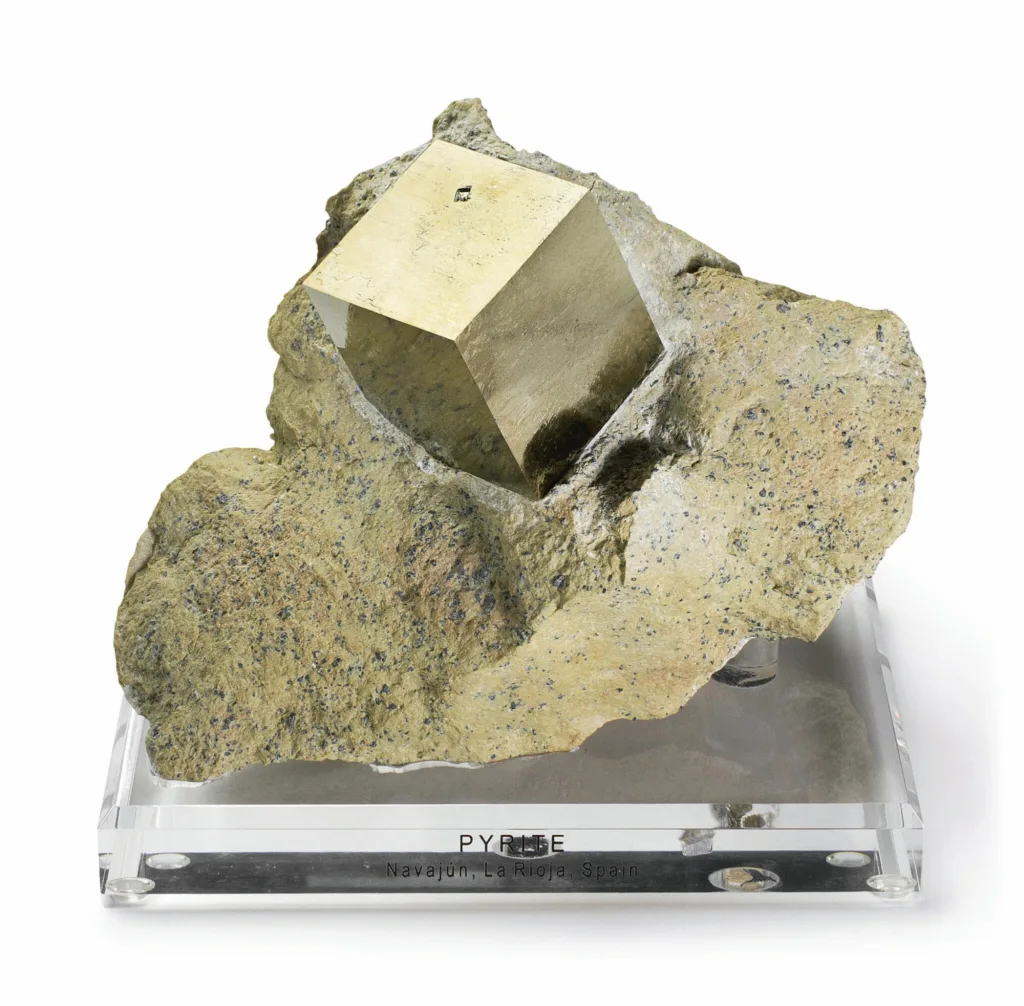
In this deep dive, we’ll explore pyrite’s unique properties, formation, historical significance, and modern uses. By the end, you’ll see why pyrite deserves respect beyond its misleading nickname.
1. The Science of Pyrite: More Than Just a Pretty Face
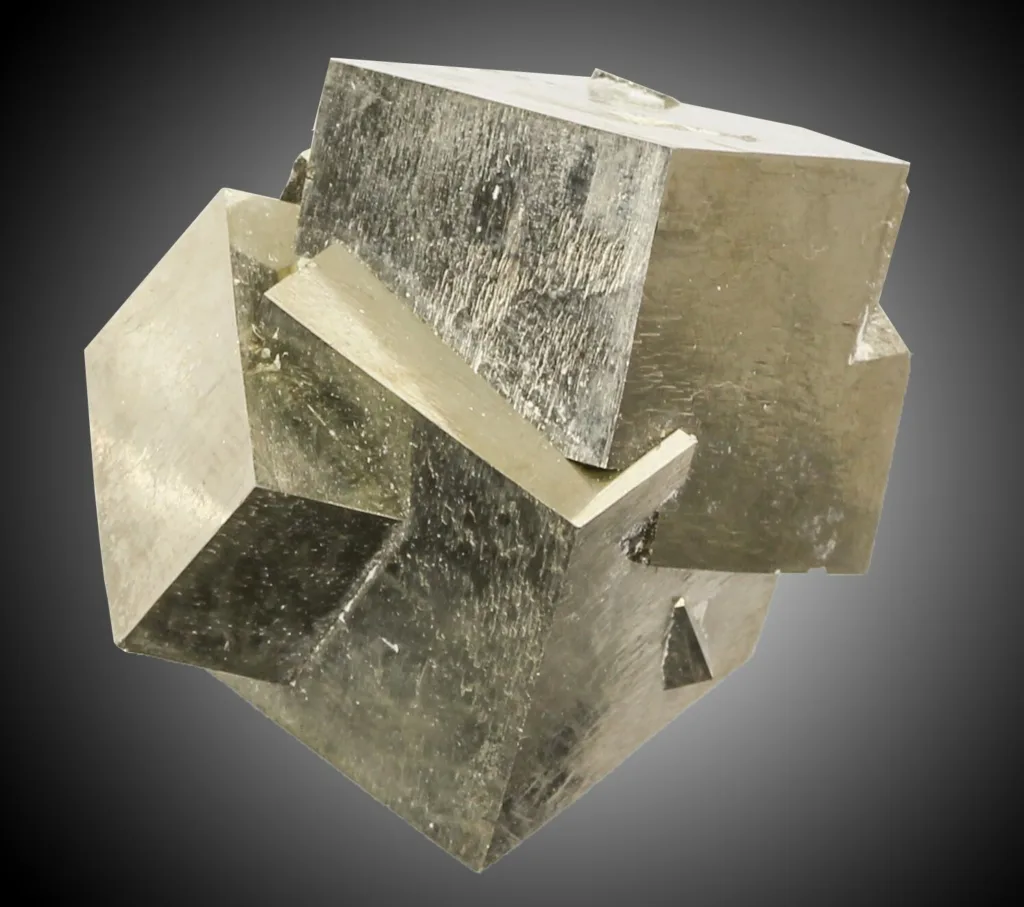
Chemical Composition & Crystal Structure
Pyrite’s chemical formula is FeS₂, meaning it consists of iron (Fe) and sulfur (S) in a 1:2 ratio. Unlike real gold (Au), pyrite is a sulfide mineral, not a metal.
What makes pyrite visually striking is its cubic or pyritohedral crystal structure, often forming perfect geometric shapes. These crystals can appear as:
- Cubes (the most iconic form)
- Octahedrons
- Striated (grooved) faces
- Massive or granular aggregates
Physical Properties
- Color: Pale brass-yellow (can tarnish to darker hues)
- Streak: Greenish-black to brownish-black
- Luster: Metallic, highly reflective
- Hardness: 6–6.5 on the Mohs scale (harder than gold, which is 2.5–3)
- Density: ~5 g/cm³ (gold is ~19.3 g/cm³, making it much heavier)
Why Does Pyrite Glitter Like Gold?
The resemblance to gold comes from its metallic luster and brassy color. However, key differences include:
- Hardness: Pyrite cannot be scratched by a fingernail, unlike gold.
- Brittleness: Pyrite shatters when struck, while gold is malleable.
- Tarnishing: Pyrite oxidizes over time, forming iron oxides and sulfuric acid.
2. How Pyrite Forms: A Geological Marvel
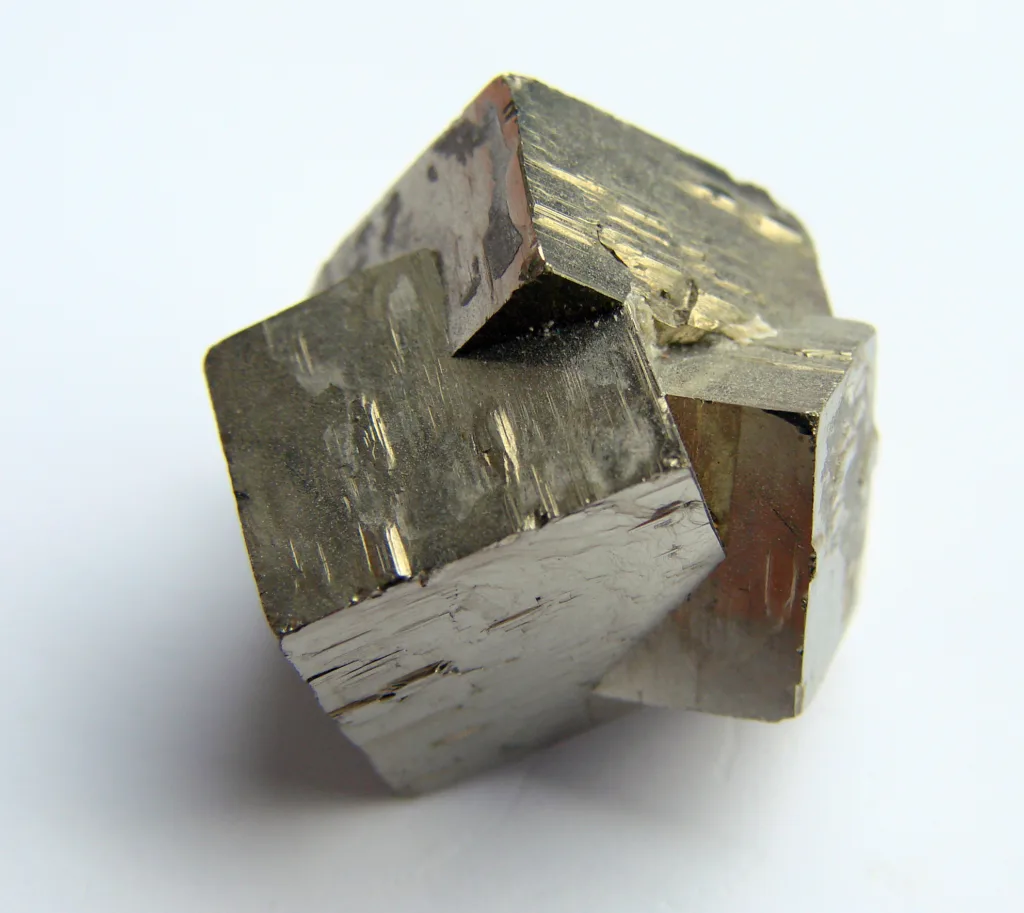
Pyrite is found in almost every geological environment, from sedimentary rocks to hydrothermal veins. Its formation processes include:
A. Sedimentary Deposition (Diagenesis)
- Forms in anoxic (oxygen-poor) environments, such as swamps and ocean floors.
- Bacteria reduce sulfate (SO₄²⁻) to sulfide (S²⁻), which reacts with iron to form pyrite.
- Common in black shales and coal beds.
B. Hydrothermal Processes
- Associated with volcanic activity and ore deposits.
- Hot, sulfur-rich fluids precipitate pyrite in veins alongside other minerals like quartz, chalcopyrite, and gold.
C. Metamorphic & Igneous Settings
- Found in contact metamorphic zones where magma alters surrounding rock.
- Occasionally occurs in igneous rocks like granite.
Where Is Pyrite Found?
- Spain (Rio Tinto mines – one of the largest pyrite deposits)
- Peru (Huanzala mine)
- USA (Illinois, Colorado, Pennsylvania)
- Italy (Elba Island)
- Russia (Ural Mountains)
3. Pyrite in History: From Ancient Alchemy to Modern Missteps
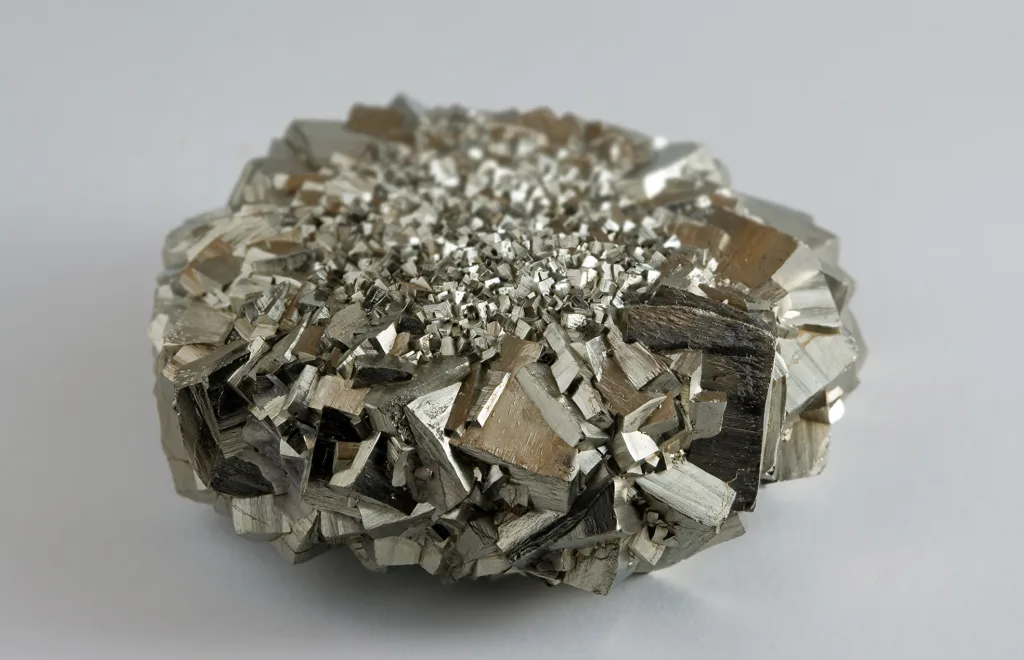
Ancient Uses & Symbolism
- Incas used pyrite as mirrors (due to its reflective surfaces).
- Native Americans carved it into ornaments and fire-starting tools (it sparks when struck).
- Ancient Greeks & Romans associated it with fire and used it in jewelry.
The “Fool’s Gold” Misconception
- During the Gold Rushes (1848–1855), inexperienced miners mistook pyrite for gold, leading to its infamous nickname.
- Unlike gold, pyrite was worthless to them—hence the “fool’s” label.
Pyrite’s Role in Early Industry
- Sulfur source for sulfuric acid production (critical for fertilizers, chemicals).
- Flintlock firearms used pyrite to create sparks for ignition.
4. Modern Uses: Pyrite’s Hidden Value
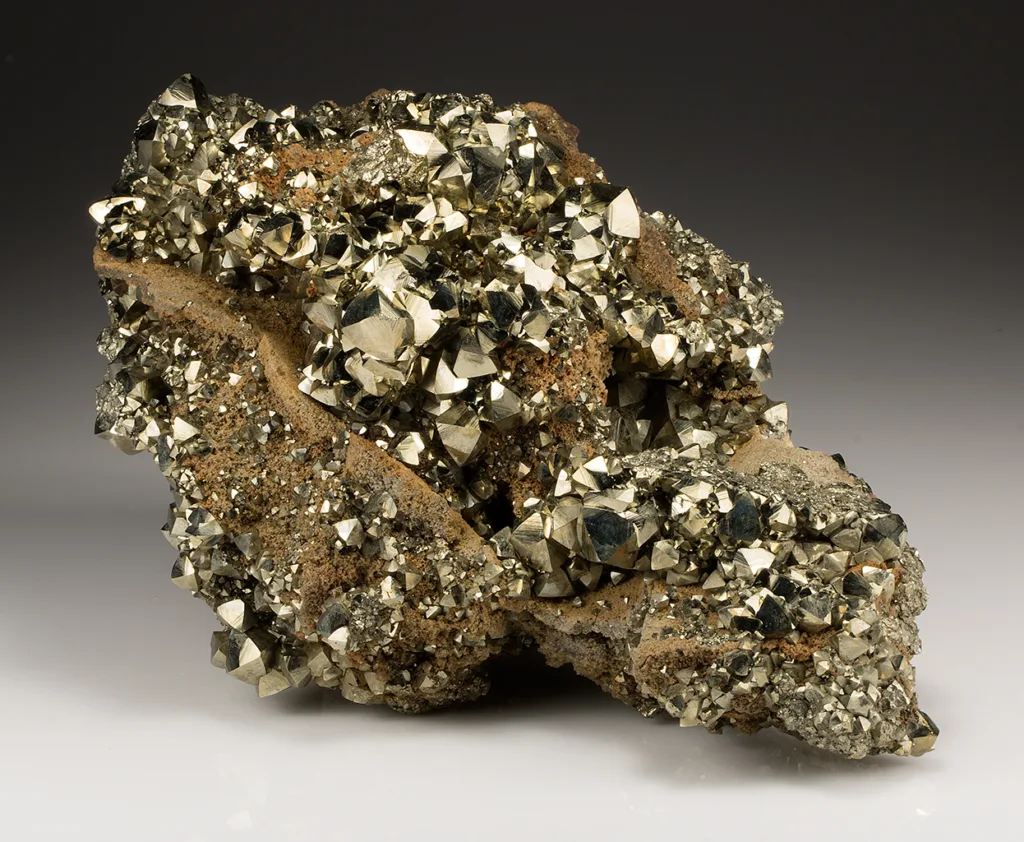
While no longer mistaken for gold, pyrite has several important applications today:
A. Industrial & Chemical Uses
- Sulfuric acid production (though now mostly sourced from smelting).
- Lithium-ion batteries (research into pyrite as a cathode material).
B. Environmental & Geological Significance
- Acid Mine Drainage (AMD): Pyrite oxidation releases sulfuric acid, polluting waterways.
- Indicator mineral: Helps geologists locate gold and other metal deposits.
C. Collectibility & Jewelry
- Popular among mineral collectors for its striking crystals.
- Occasionally faceted into gems, though it’s too brittle for most jewelry.
5. Pyrite vs. Gold: How to Tell the Difference
| Property | Pyrite | Gold |
|---|---|---|
| Hardness | 6–6.5 (scratch-resistant) | 2.5–3 (easily scratched) |
| Density | ~5 g/cm³ | ~19.3 g/cm³ (heavy) |
| Malleability | Brittle (shatters) | Malleable (bends) |
| Streak | Greenish-black | Golden-yellow |
| Tarnishing | Oxidizes to rust | Does not tarnish |
Quick Test:
- Scratch Test: Gold is soft; pyrite is hard.
- Streak Test: Rub on unglazed porcelain—gold leaves a gold streak, pyrite leaves a dark one.
- Density Test: Gold feels much heavier for its size.
6. The Dark Side of Pyrite: Environmental & Structural Risks
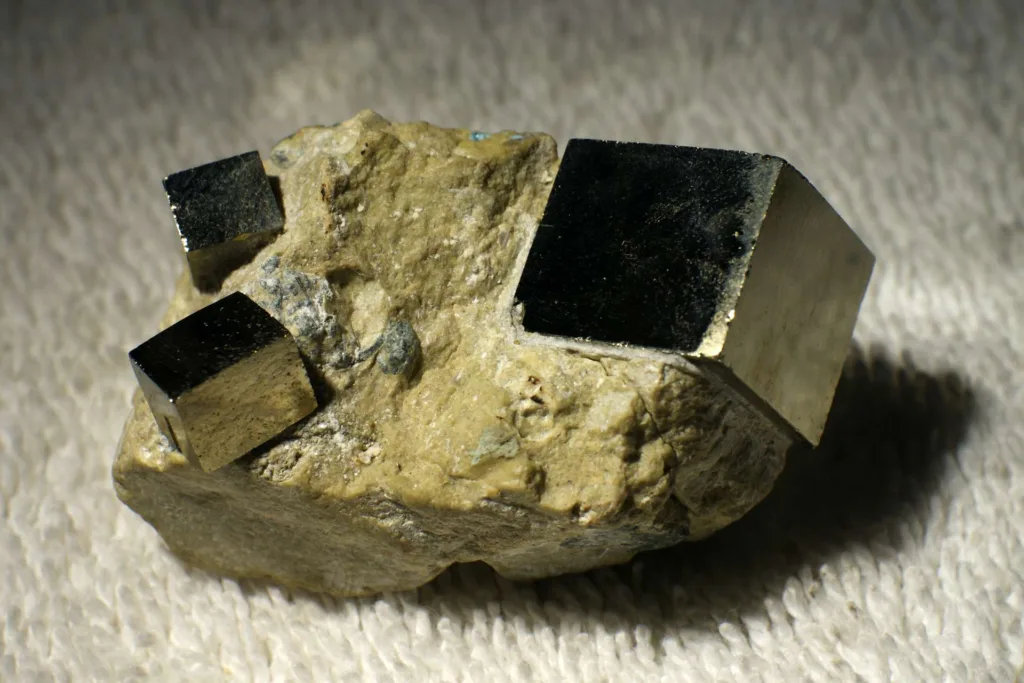
A. Acid Mine Drainage (AMD)
- When pyrite is exposed to air and water, it oxidizes, producing sulfuric acid.
- This acid leaches heavy metals (like arsenic) into water supplies, harming ecosystems.
B. “Pyrite Disease” in Construction
- Pyrite in building materials (like crushed stone under foundations) can expand when oxidized, causing cracks and structural damage.
- Notable cases include pyrite heave in Canadian homes (2000s).
7. Pyrite in Pop Culture & Folklore
- Symbol of deception in literature (e.g., “fool’s gold” metaphors).
- Used in early fire-starting tools (hence the name “pyrite,” from Greek pyr = fire).
- Featured in video games (e.g., Minecraft as a mineral that can be smelted).
Conclusion: Pyrite’s Legacy Beyond “Fool’s Gold”
Pyrite is far more than just a mineral that tricks the untrained eye. It’s a geological wonder, an industrial resource, and a historical artifact. While it may not have the monetary value of gold, its scientific and cultural significance is undeniable.
Next time you see a glittering piece of pyrite, remember—it’s not just fool’s gold. It’s a testament to Earth’s incredible mineral diversity.
Further Reading & References
- Klein, C., & Dutrow, B. (2007). Manual of Mineral Science.
- Rickard, D. (2015). Pyrite: A Natural History of Fool’s Gold.
- U.S. Geological Survey (USGS) reports on acid mine drainage.




































